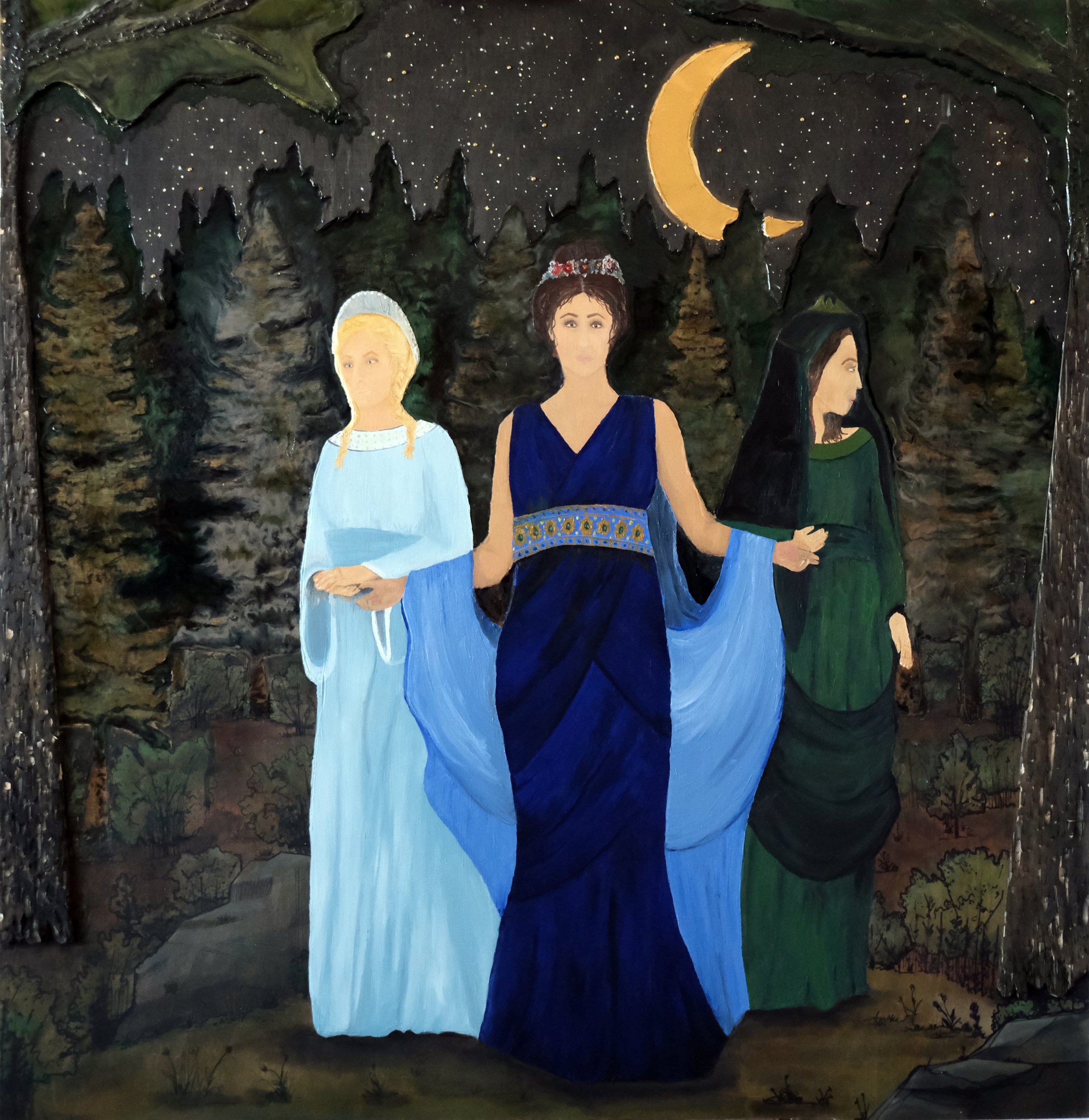As im working my way through this goddess series I am constantly trying to improve my process and techniques while holding true to the design intent when i originally began this journey. This piece in particular felt like it came together easier than previous works. I let myself be less rigid in my choice of materials and in the end the piece felt more authentic as it came closer to being finished.
In the Lunar Faces | Feminine Divine series I’ve had to narrow down my focus in order to not overwhelm myself with the shear volume of goddesses associated with the moon. Arianrhod is a welsh goddess associated with the moon whose name means Silver Wheel. She has so many different associations with things such as death and rebirth, and guiding souls through the afterlife. She is a feminine celestial power which to me is why she was so important to be included. Her distinct attributes make her an important inclusion in this series.
This welsh goddess that is so often associated with the full moon, stars, and otherworldliness is the most recent completed piece in the Lunar Faces | Feminine Divine series. While most lunar goddesses play a large roll in fertility and water movements, Arianrhod is most known for her control of fates, death, and rebirth. She is a celestial being that is a part of the earliest known Welsh mythologies.
The business and admin side of operating your own small business has never been my favorite task. But in getting more of these goddesses completed, I’ve begun yo be excited about submitting them to national exhibitions both online and in person. Arianrhod will be making her debut this weekend at the Dickson ARTs Fest! I am thrilled to get to show her off! If you’re in the Dickson, Tennessee area come see her in real life, along with many other artists works!











